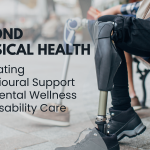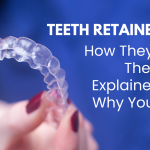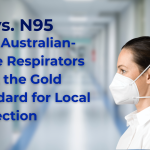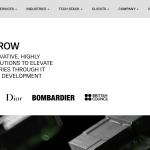In the highly scrutinised world of respiratory protection, where the difference between adequate safety and exposure can be measured in microns, the choice of a respirator is paramount. For health enthusiasts monitoring personal protection standards and medical field professionals making critical procurement decisions, understanding the nuances between globally recognised respirator classes is essential. While the N95 standard from the US is perhaps the most famous, the Australian/New Zealand P2 standard stands as the benchmark for local protection, offering equivalent filtration backed by rigorous regional quality controls. When assessing options for reliable, high-quality protective gear, it’s a positive step for both your practice and personal health to buy P2 masks online from verified Australian manufacturers, ensuring your commitment to superior local standards. This article dissects the technical similarities and critical differences between the P2 and N95 classes, making a compelling case for why locally-made P2 respirators represent the gold standard for protection in the Australian healthcare and industrial landscape.
The Technical Equivalency: P2 and N95 Filtration Standards
At their core, the P2 and N95 classifications are functionally equivalent in their ability to filter airborne particulates. The difference lies in the certifying body and the specific testing protocols.
The N95 designation is granted by the US National Institute for Occupational Safety and Health (NIOSH) under the 42 CFR Part 84 regulations. The “95” indicates that the respirator is certified to filter at least 95% of airborne particles, including bioaerosols, dust, and mist, down to 0.3 microns. It is a filter classification focusing purely on particulate filtration efficiency.
The P2 designation is part of the harmonised Australian/New Zealand Standard (AS/NZS 1716:2012). The “P2” class requires a minimum filtration efficiency of 94% against non-oil-based particles. Although numerically one percentage point lower than the N95 rating, this slight difference is statistically insignificant in real-world application, making the two classes interchangeable for most clinical and industrial uses. The P2 classification also incorporates a broader assessment of the respirator’s overall performance, including stringent requirements for breathing resistance and material integrity.
The key takeaway for medical professionals is that any respirator meeting the AS/NZS 1716:2012 P2 standard provides a level of protection considered equivalent to an N95 respirator in the international sphere. Compliance with the P2 standard ensures the product is fully fit for purpose within the Australian regulatory framework, including the Therapeutic Goods Administration (ARTG).
AS/NZS 1716:2012: The Foundation of Local Quality
The AS/NZS 1716:2012 standard is not merely a regional label; it is a comprehensive certification framework that guarantees quality and suitability for the unique requirements of Australian and New Zealand workplaces. This local standard is particularly relevant because it mandates testing under conditions and parameters that are specifically designed for the region.
One crucial distinction within the P2 standard is the potential for the Dolomite (D) clogging test to be applied. While not mandatory for all P2 respirators, manufacturers aiming for peak performance will certify their products as “D” marked. This test evaluates the mask’s resistance to clogging when exposed to high concentrations of dolomite dust, ensuring the respirator maintains low breathing resistance over prolonged periods of use. For healthcare workers who must wear respirators for extended shifts, the “D” marking translates directly into better comfort and sustained breathability, mitigating the risk of fatigue or premature mask removal due to discomfort.
Furthermore, a locally certified product simplifies compliance. Health organisations and occupational safety teams are required to adhere to the AS/NZS standards. Relying on an N95 respirator requires an implicit understanding and acceptance of the equivalency to P2, which can complicate documentation and internal auditing. By choosing a product explicitly labelled and registered as P2, organisations ensure they are selecting a product proven to meet the highest safety benchmarks established by local regulatory bodies.

Beyond Filtration: The Crucial Role of Fit and Comfort
The single most critical factor determining a respirator’s effectiveness is not its filtration percentage, but its fit. A perfectly certified mask is useless if it leaks around the face seal. This is where high-quality Australian manufacturers are increasingly innovating to meet the diverse morphology of the local population.
The AS/NZS 1716:2012 standard places a high emphasis on the design elements that facilitate a proper seal. Modern Australian-made P2 respirators often incorporate features like:
- Size Variety: Moving beyond a one-size-fits-all model, leading local manufacturers offer an extensive range of sizes, from extra-small to extra-large, drastically increasing the likelihood of achieving a perfect fit for every user.
- Innovative Fastening: Features like adjustable headbands, or external accessories such as a FitClip, are designed to pull the respirator snugly against the face and alleviate pressure points that cause discomfort, thereby encouraging compliance with long-duration wear requirements.
- Aesthetic and Functional Design: Contemporary designs, including tri-panel configurations, allow the mask to fold and conform to complex facial structures better than traditional cup-style masks, enhancing both fit and wearer comfort.
For any medical professional, the gold standard involves pairing the P2 respirator with a quantitative fit test (QNFT). The availability of locally-designed and size-optimised P2 masks significantly improves the pass rate during QNFT, saving time and resources for organisations. A mask that is designed with the local market in mind is inherently more likely to provide a secure and reliable seal for the end-user.
The Local Advantage: Supply Chain Resilience and Quality Assurance
The case for Australian-made P2 respirators extends far beyond the technical specifications of the mask itself; it involves the resilience and integrity of the entire supply chain. The global supply disruptions experienced in recent years highlighted the inherent risks of relying on overseas manufacturing for essential medical personal protective equipment (PPE).
Supply Security and Geopolitical Independence: By sourcing locally, health systems benefit from a shortened, domestically-controlled supply chain. This minimises exposure to international trade disruptions, logistical delays, and geopolitical instability. A consistent, reliable supply of P2 respirators ensures that frontline workers are never left vulnerable during a health crisis or a surge in demand.
Direct Quality Control and Auditability: Australian manufacturing operates under some of the world’s most stringent regulatory frameworks. Facilities producing medical-grade P2 respirators must comply with ISO 13485 (Medical Devices Quality Management Systems), ensuring every step from raw material sourcing to final packaging is governed by meticulous quality control. Local procurement allows for easier auditing, greater transparency, and direct communication between the end-users (hospitals, clinics) and the manufacturer, enabling rapid feedback loops for continuous product improvement.
Economic and Environmental Benefits: Choosing Australian-made supports local jobs, contributes to the national economy, and builds domestic capability in advanced medical manufacturing. Furthermore, reduced international freight contributes to a smaller environmental footprint, aligning with the sustainability goals of modern health organisations and environmentally conscious health enthusiasts.
In conclusion, while the N95 and P2 standards are siblings in their core filtration capacity, the Australian-made P2 respirator offers a holistic advantage. It combines the proven technical efficacy of 94% filtration with the superior security of a local, highly-audited supply chain. By aligning with the AS/NZS 1716:2012 standard and embracing products designed with local fit and comfort in mind, health professionals and keen health enthusiasts alike ensure they are adopting not just a mask, but a comprehensive, locally-perfected gold standard in respiratory protection. The confidence that comes from a product designed, tested, and manufactured to meet the specific needs of the local environment is invaluable.
Lynn Martelli is an editor at Readability. She received her MFA in Creative Writing from Antioch University and has worked as an editor for over 10 years. Lynn has edited a wide variety of books, including fiction, non-fiction, memoirs, and more. In her free time, Lynn enjoys reading, writing, and spending time with her family and friends.















